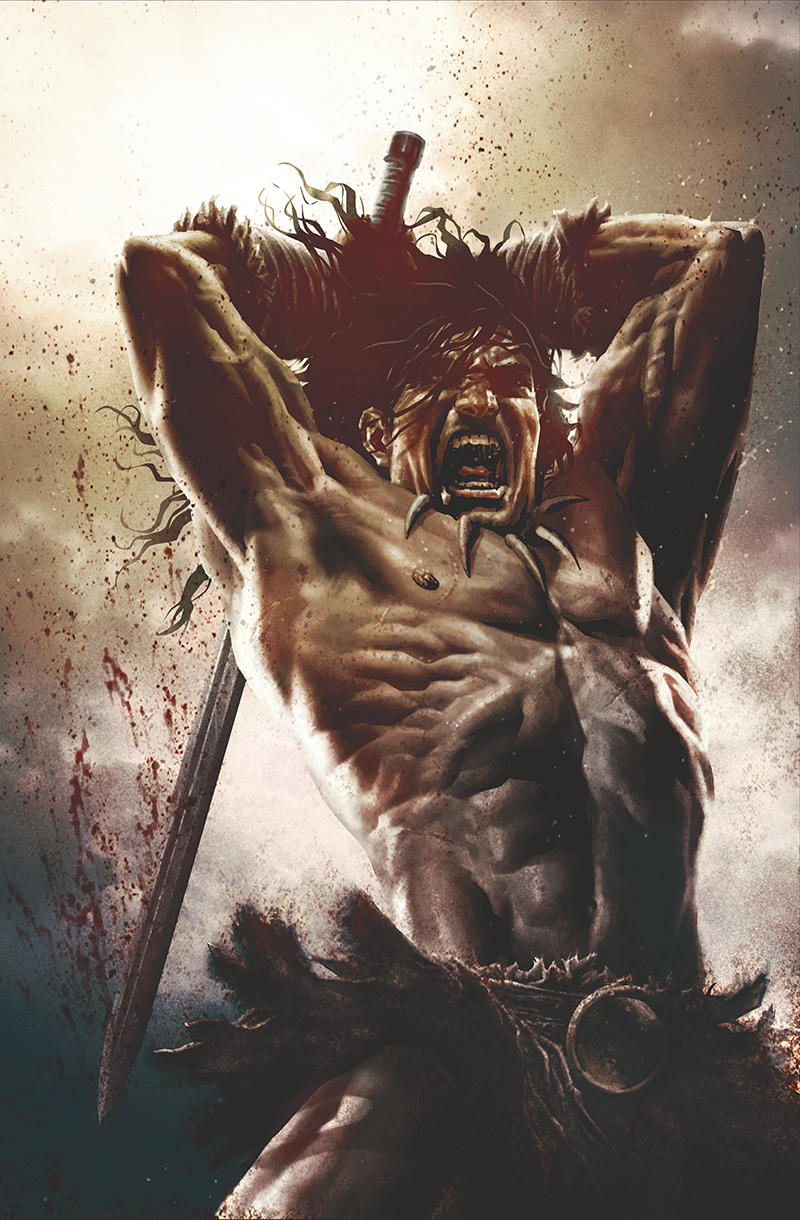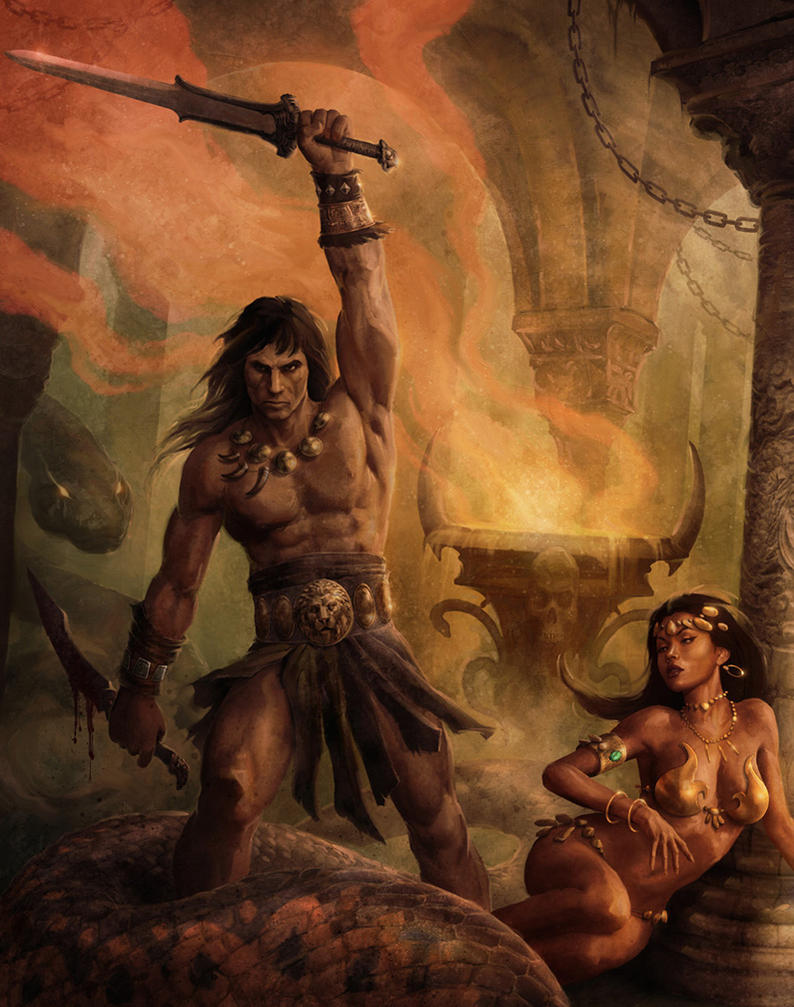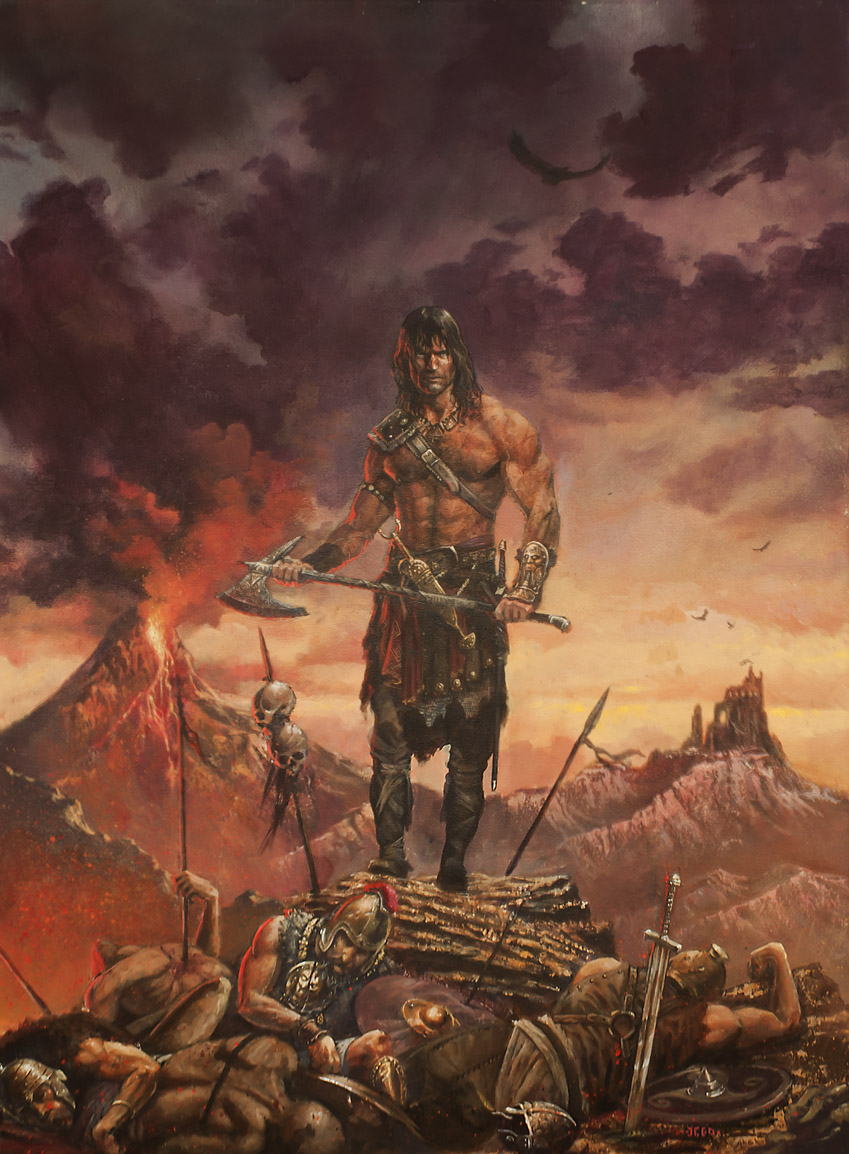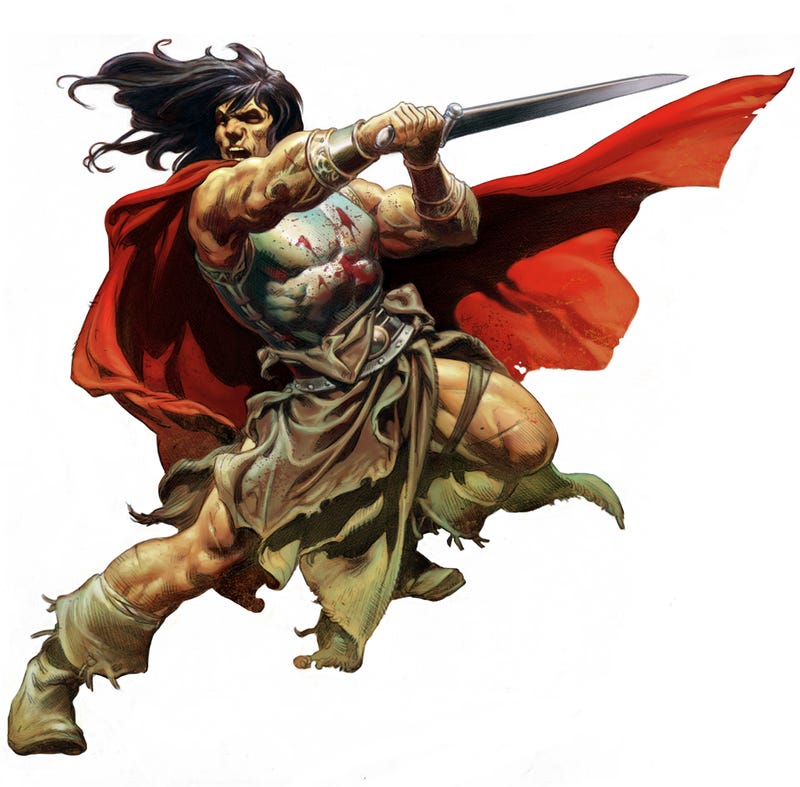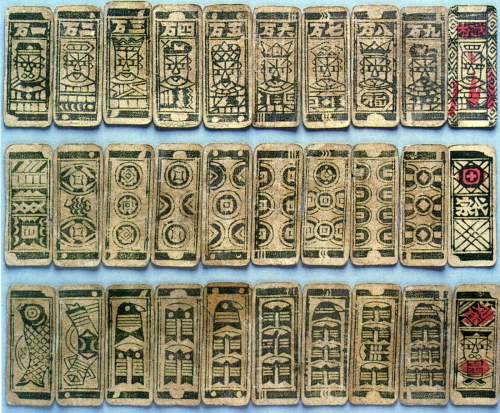MUD PUDDLE!
A GAMBLING GAME FOR THE CONAN THE BARBARIAN ROLEPLAYING GAME
Mud Puddle, or "Puddle" as it is sometimes called, is a game of chance and skill played throughout the Hyborian kingdoms. The game is played with tiles, not unlike modern day dominoes or mahjong tiles. Only two players play, often because tile decks are not complete, and there is not enough tiles to accommodate more players (but there are other reasons, see below). At the start of the game, all the tiles are placed in the center of the two players and washed. That is, the dealer (usually the owner of the deck) mixes the tiles randomly to the other player's satisfaction. The area between the two players is called the "puddle". When the dealer's opponent is happy with the wash, the opponent draws one tile from the pool towards himself. The dealer does the same thing. Then, the opponent draws a second tile towards him to form his starting hand. The dealer, too, pulls from the puddle and takes a second tile for his starting hand.
Usually, there is a "post" before the tiles are washed and the opening hands are dealt, with both dealer and player putting up something of value to start the game. When the deal is made (the players take their two tiles), the players arrange these by making their best hand. Each long end of a tile has a value, and the players' hands are made up of two touching sides. Each tile has two different values on it, one on each end of the tile. So, there are only four combinations to start the game.
This is an ancient Majhong set. Imagine the Hyborian Age tiles look something similar.
Players keep their hand's secret from the other player. Once the deal is made, there is a betting round where the player, not the dealer, always goes first. He can pass and not bet. Or, he can bet.
The dealer, then, can fold his hand and surrender his post that he paid to the puddle earlier. Or, the dealer can call the player's bet. Or, the dealer can meet and raise the player's bet.
If there is a raise, the player can call the raise, raise the raise, or fold his hand. And, so on. Any money bet is paid to the pool, between the two players.
Once the betting is done, each gambler (first the player, the the dealer) picks a new tile from the pool and places it face up in front of him. Each gambler can use the value of the exposed card and watch his opponent's play in an effort to get a read on the other gambler's hand. Since each tile is marked with two values (one on each end), the owner of the tile can use whichever end of the tile best helps his hand, but he does not have to decide at this point. He can change his mind about the ordering during the last phase of the game. Some ranks shown on the tiles reduce the gambler's secret hand. Other ranks on the tiles will improve the gambler's secret hand.
Once both gamblers have the open tiles, a betting round is made, and it is handled just like the betting made after the deal.
Now, for the last phase of the game. As before, each gambler selects another tile from the puddle. Again, the player selects first followed by the dealer. This second tile is also turn up for both gambers to see. Here, at the end of the game, each gambler's complete hand will consist of two secret tiles and two open tiles that each gambler sees. Again, some ranks reduce the gambler's secret hand, but some increase the value of a hand. Each gambler decides how to make the best hand from his four tiles in his head, and then finishes the hand.
The lowest hand possible in the game beats every other hand. Otherwise, the highest hand wins. In the event of a tie, the two gamblers re-wash all of the tiles and play a second hand (but, when this happens, posting is not necessary and the money already paid to the pool stays in the pool). New hands are played, keeping whatever bets are in the pool, until a winner is established (who takes the entire pool of winnings).
At this point, the gamblers play through their final betting round. As always, the player bets first followed by the dealer, and the betting round is handled just like those in previous phases.
Once the betting is done, the dealer must reveal his hand to the player. The player can fold his hand, if he knows he's beat, without revealing his secret tiles to the dealer, or, if the player knows that he will win, he can reveal his secret hand, declare his hand's rank (proving what he says by showing the secret tiles) and take the pot.
This completes a hand of Mud Puddle.
Not all gamblers know this, but the game is named for a Zamorian saying, "One must step through the mud puddle to find riches." It means that one must work hard and endure strife in order to find one's way to wealth and prosperity. Among the Zamorian thieves, it means that one must be willing to get dirty (pull off a dangerous job) in order to gain the prizes.
Among the Zamorian thieves, the game is sometimes referred to as "Fence," although no thief would ever describe the game that way in mixed company. What the multitude of Mud Puddle gamblers don't know is that the game originated in ancient Zamora, long before the Hyborian Age. It is said that the game is based on a Khitian game that found its way to ancient Zamora along the trade routes. Zamorian thieves took to the game not only as a way to gamble, but also as a way to fence their stolen goods. You see, the thieves would play Mud Puddle with patrons at a tavern, preferably with travelers. If the thief won, he would pocket the coin. If he lost, he would offer to pay his opponent fairly, with coin, or the thief would give his opponent the option of forgoing the payment and taking some stolen object offered by the thief. This works best when the thief offers an object of more value than the coin that the thief would have paid to the other player--the thief getting better value on his item than he would at his usual fence. Thieves good at this would sometimes not only kept their gambling losses when fencing items this way but also would convince their opponent that the offered item was worth more than what was owed to the player, having the opponent accept the item and pay the thief some extra coin! When a thief does a good job fencing his stolen items through playing the game, he'll refer to it, among other thieves only, as, "pulling his opponent through the mud."
"You got what for that tin carafe?
"Another 50 silvers! Yeah, I really pulled that guy through the mud!"
Mention above is the note that Mud Puddle is usually played with one dealer and one player. The reason for this is not only because there are not enough cards in a Puddle deck to accommodate multiple players (and some decks are incomplete but still used), but the game evolved that way because it allows a thief to focus on one person, working on him, in order to get the best deal he can for his stolen goods.
The game became a favorite in Zamora first. Then, as the Hyborian kingdoms birthed itself across the continent, Mud Puddle traveled along the trade routes to most parts of the known world, played by traveling thieves, caravan guards, mercenaries, bandits, and gamblers.
A Mud Puddle deck is a set of tiles with images and designs carved on one side (not unlike the Majhong pic above). Tiles are of different sizes but usually about the size of half a man's hand. The tiles themselves are typically made of lacquered and fired brick or carved from lacquered wood. More expensive decks are made of etched and polished stone. Brick, wood, ivory, and granite are popular materials. A deck will typically have a hole drilled on one end so that a leather cord can be submitted through the hold to carry all the tiles. When in play, the tiles are removed from the leather loop and placed face down on the table in the pool, in between the dealer and the player, then washed, as described above. Sometimes, and odd deck will be used where the values of the tiles are different from that shown on a standard deck, but the game is played the same way. Also, some players insist that the dealer and player switch back and forth each hand so that the same gambler doesn't bet first every time.



